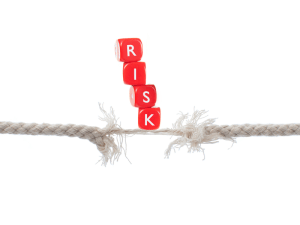How to Determine Your Client's Risk Tolerance
Determining the client's risk tolerance is not an exact science and requires you to communicate with your client. Asking relevant questions will help you determine how willing or averse they are to taking risks, you can guide them to select the best risk directive or model portfolio to achieve their goals.
What Does The Word “Risk” Mean For Your Clients?
The word “risk” evokes similar reactions in most human beings. It brings forth feelings of uncertainty or the fear of negative consequences as a result of some action taken. That's the simple definition, however, the financial definition has a more definitive meaning. For financial advisors and their clients, “risk” means the possibility of losing money, investment, or a business venture.
Since risk is all about “losing” something, it would appear normal for clients to be hesitant about making financial decisions that might result in negative consequences. However, that is not the case for everyone. Assessing a client's risk tolerance is no easy feat and before you aim to do that, you need to discover what the word itself means to your client. For some clients, “risk” maybe something exciting or daring that they enjoy and not something they generally avert from. It is essential that you as a financial advisor learn to recognize how risk-averse or tolerant your client is, both in subjective and objective terms.

In order to make sure you come up with the soundest investment strategy for your clients, it is necessary you take into consideration factors such as what are the client’s financial goals, what is the risk tolerance of your clients, and how much capacity do they have to bear risks. All these actors are intricately woven with each other and need to be laid out in front at the same time and examined in-depth so that you may help your client achieve their financial goals.
Related: How to Talk About Risk Management With Your Clients
Risk Tolerance
In academic terms, risk tolerance refers to the client’s “willingness” to take on risks. In financial terms, that would consist of the desire to pursue financial actions that have uncertain outcomes and could very well result in negative circumstances.
The ability and willingness to take risks for a client may not always coincide. Someone can be conservative by nature and exhibit a low willingness to take risks despite the fact they might have high amounts of assets and low liabilities. Their aversion to taking risks is what would be called lower risk tolerance. Such a client might have the financial ability to handle losses. But, they might lack the emotional capacity to bear those losses.
Whereas someone who has high-risk tolerance might be more willing to engage in risky-trade offs even though their portfolio might lack the ability to bear the losses that might result from those risks. This client would have high risk “tolerance.” You may find that such clients might be comfortable bearing financial losses emotionally, however, helping them achieve their financial goals could be a great challenge.

Measuring Client's Risk Tolerance
When you are attempting to evaluate your client’s risk tolerance, you are trying to ask them “How much does a financial situation have to get worse before you panic and decide to sell it off?” For some clients, even a 5% loss would be enough to have them spiral into panic mode and attempt to sell off their investment.
Similarly, you need to determine how much of a gain they would be willing to withstand risk. Would a 20% return be worth taking the risk? A client who is averse to taking risks might calculate how much time it would take for them to make up for that potential loss in case the investment goes sideways before making a decision. Would they consider 3 years to be an acceptable amount of time?
For a client with whom you have been working for a while, it may be easy for you to determine their tolerance to risk, however, you may still need to reassess their risk level tolerance since their current life situation may change and could result in an altered tolerance level. For a new client, it would require you to start from scratch. In either case, it is always a good idea to start by asking questions to help you where their current tolerance level stands.
It is always good form to have questions in a documented format for assessing a client's risk. Consider doing the research before creating such a template as the internet is full of guidance on which questions to ask. Moreover, with every portfolio you close, do not forget to revisit your format and make changes as you gain experience. The following is a suggested list of questions you may consider asking to get a better sense of where your client’s risk tolerance falls. Of course, the list does not end here and the better the questions are, the better you can judge your client's risk tolerance level.
- How apprehensive would you feel about taking an above-average risk to gain above-average potential returns? (helps you determine risk comfort)
- How anxious are you about losing money in the stock market?
- What sort of a loss in a year would it take for you to be tempted to sell your investment?
- How many years do you plan to work before you retire? (helps determine time horizon)

Risk Tolerance Scale
Once you have assessed your client, you should be able to find where they fall on a risk tolerance scale. The following is a guide to help you identify the level of risk tolerance your client stands for and the kind of portfolio they may be best suited for.
-
Conservative Risk Tolerance:
Someone with a conservative approach prefers engaging in financial decisions with minimum risks. Although their investment portfolios would involve little to no risk at all, they have minimal potential for returns as well. Such portfolios are best designed for investors who are thinking of withdrawing money for their investment in the near future, normally under 5 years.
-
Moderate Risk Tolerance:
Investors with moderate levels of risk tolerance have a more balanced approach to handling growth and losses. Their portfolio investments may involve some risk and such portfolios are a good approach for investors that have moderate time left before they plan on accessing their funds (generally 5 to 10 years.)
-
Aggressive Risk Tolerance:
A client with an aggressive risk tolerance does not shy away from taking opportunities that have high risks involved yet they have the chance to gain maximum potential returns as well. An investment portfolio designed with an aggressive risk tolerance approach is best for young investors who don’t plan on laying hands on their funds any time soon (at least 10 years.)
To Sum It Up
Once you have managed to assess your client’s tolerance level, it is all about designing a portfolio that balances two things: their risk tolerance level and the financial capacity to handle those risks. A suitable investment would be one that balances both their willingness and the ability to take risks. Only then can you help your client achieve financial goals.
Know that understanding your client's tolerance level and evaluating it as accurately as possible isn’t an exact science. There is no standardized way to assess it and thus designing an appropriate portfolio can involve judgement calls. However, over time you will find yourself getting better at assessing where your client’s risk tolerance falls and what the best suitable course of action is.




